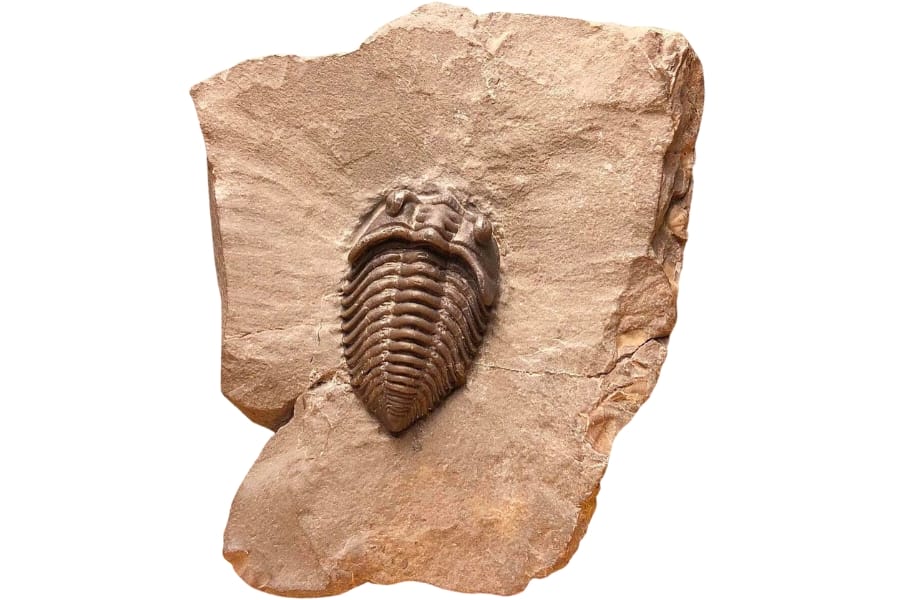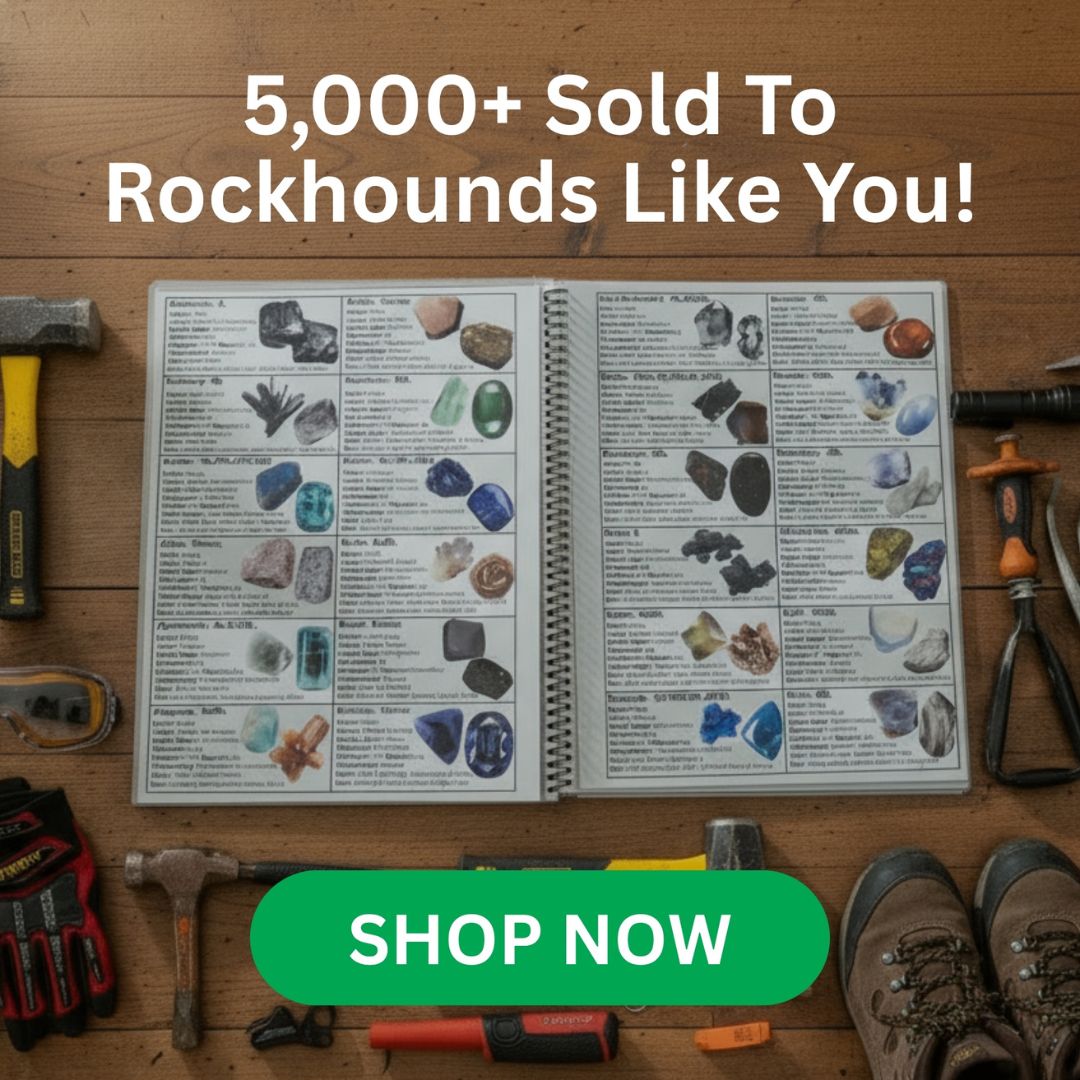Fossils are like nature’s time capsules, but finding them isn’t always a walk in the park, especially in Utah where the landscape can be as tricky as a maze.
Think of Utah fossils as pieces of a very old puzzle. They’re hidden in rocks and dirt. Without someone to show you the ropes, you might walk right past a dinosaur bone or ancient plant without even knowing it!
In this article, we’ll show you the sure sites where you can find fossils in Utah. Some of the best ones we have are the U-Dig Fossils Quarry, Dinosaur National Monument, Spanish Fork Canyon, San Rafael Swell, and the Wellsville Mountains.
We’ll also share important information on what you might stumble upon while you’re exploring, specifically the different common and rare Utah fossils. Our state is home to a wide array of fossils, so it’s good to get familiar with them before you go here.
With a bit of guidance and a sharp eye, you’ll successfully discover the remnants of ancient oceans, long-gone deserts, and prehistoric creatures that once roamed our state.
The Fossils Of Utah You Can Find
Luckily, there’s an abundance of great rockhounding sites in Utah, so finding natural treasures here like certain rocks and minerals will be a blast. But if you’re on the lookout for fossils, there are specific areas you should explore.
Before we go into the details of those places, let’s discuss first the different common and rare Utah fossils.
- The extensive local experience and understanding of our team
- Input from multiple local fossil hunters and fossil groups
- The accessibility of the various locations
- Safety and potential hazards when collecting
- Private and public locations
- A desire to include locations for both experienced fossil lovers and those who are just starting out
Using these weights we think we’ve put together the best list out there for those who love finding great new fossils for our collections!
Common Utah Fossils
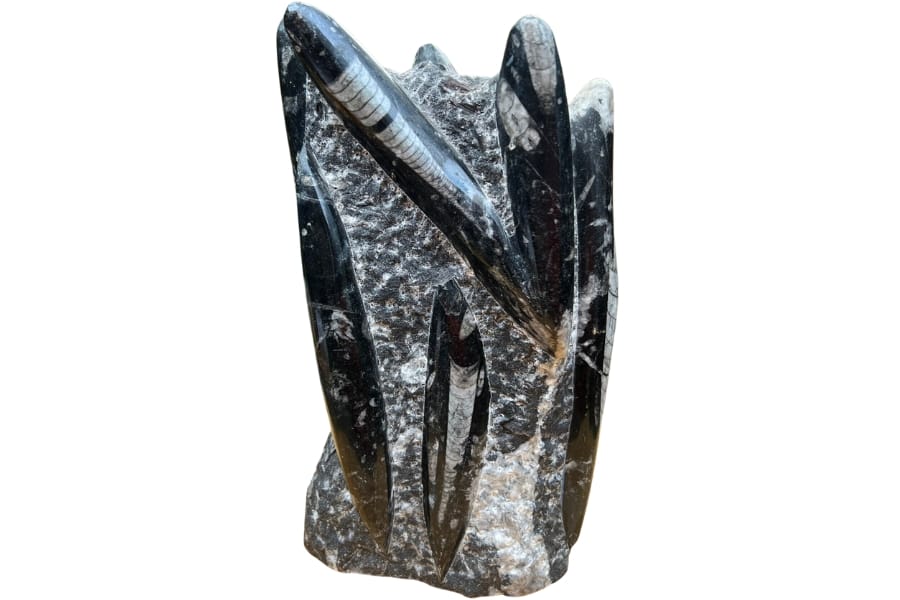
When you’re exploring here, below are some of the common Utah fossils that you have a high chance of uncovering:
- Corals
- Clams
- Trilobite
- Brachiopods
- Cephalopods
Utah State Fossil – Allosaurus fragilis
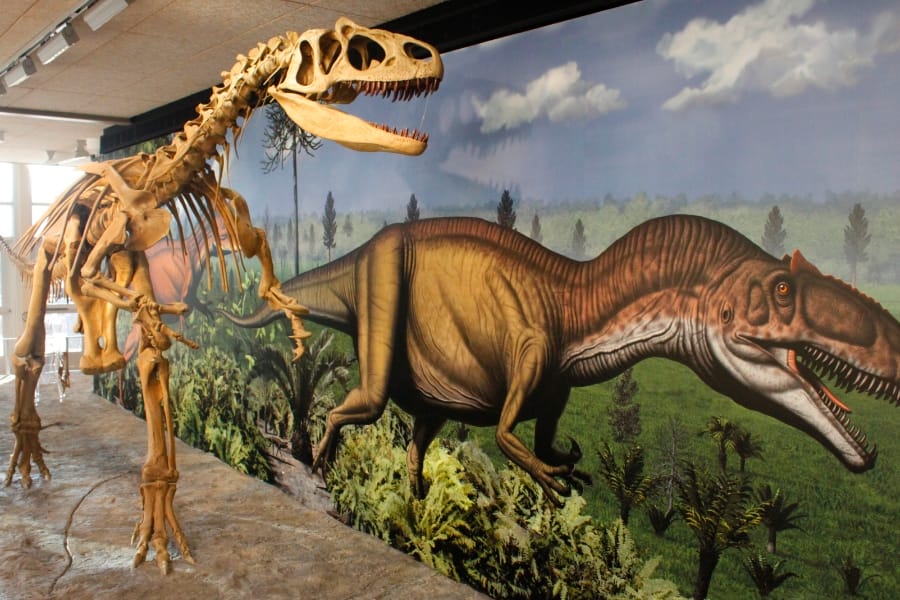
Allosaurus fragilis is a dinosaur that roamed Utah about 150 million years ago. It’s a fierce predator on two legs, with a massive head full of sharp teeth, and claws that could grab onto anything that crossed its path. Like a lion, it’s the top hunter during its time.
This dino’s bones are found more in Utah than anywhere else. It grew up to 28 feet long and had a unique way of chomping down on its dinner, using its upper jaw like a hatchet and swinging down to munch on other dinosaurs.
One fun fact about the Allosaurus is that scientists think it may have hunted in groups. Their eyes also faced forward, which gave them “binocular vision,” meaning they could see in 3D and judge distances well, just like a hawk eyeing its prey.
But even with a name that means “different lizard,” it had a fragile side, hinted at by ‘fragilis’. This means that, despite being tough, it could have been prone to injuries.
Rare Utah Fossils
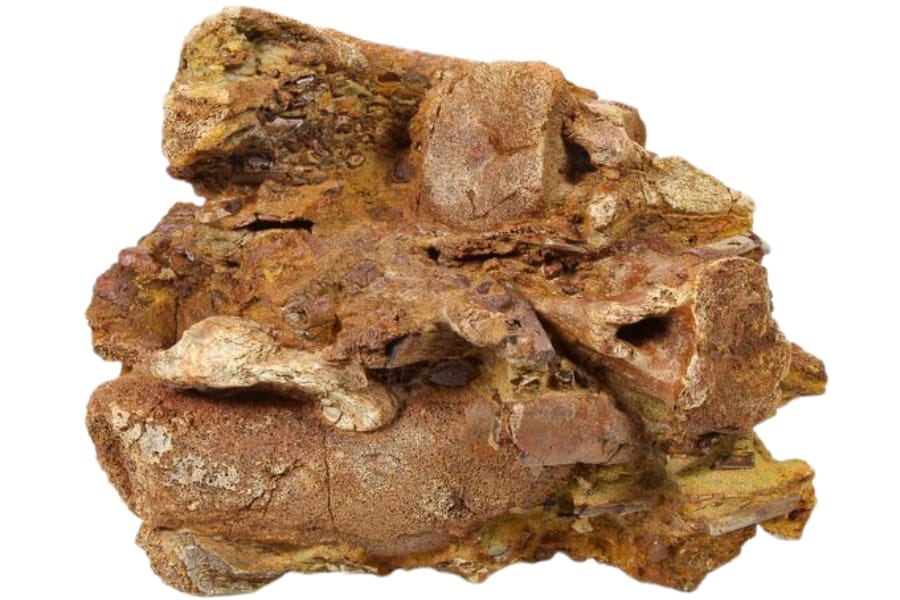
If you’re lucky and keen enough during your search, here are some of the rare Utah fossils that you might find:
- Dinosaur bones
- Small mammal bones
- Vertebrate teeth
- Turtle
The Best Places To Find Fossils In Utah
Utah abounds in many sure sites to find fossils, but here are our top 5 recommended spots that bear the most interesting and bountiful finds:
Always Confirm Access and Collection Rules!
Before heading out to any of the locations on our list you need to confirm access requirements and collection rules for both public and private locations directly with the location. We haven’t personally verified every location and the access requirements and collection rules often change without notice.
Many of the locations we mention will not allow collecting but are still great places for those who love to find beautiful rocks and minerals in the wild without keeping them. We also can’t guarantee you will find anything in these locations since they are constantly changing.
Always get updated information directly from the source ahead of time to ensure responsible rockhounding. If you want even more current options it’s always a good idea to contact local rock and mineral clubs and groups
U-Dig Fossils Quarry
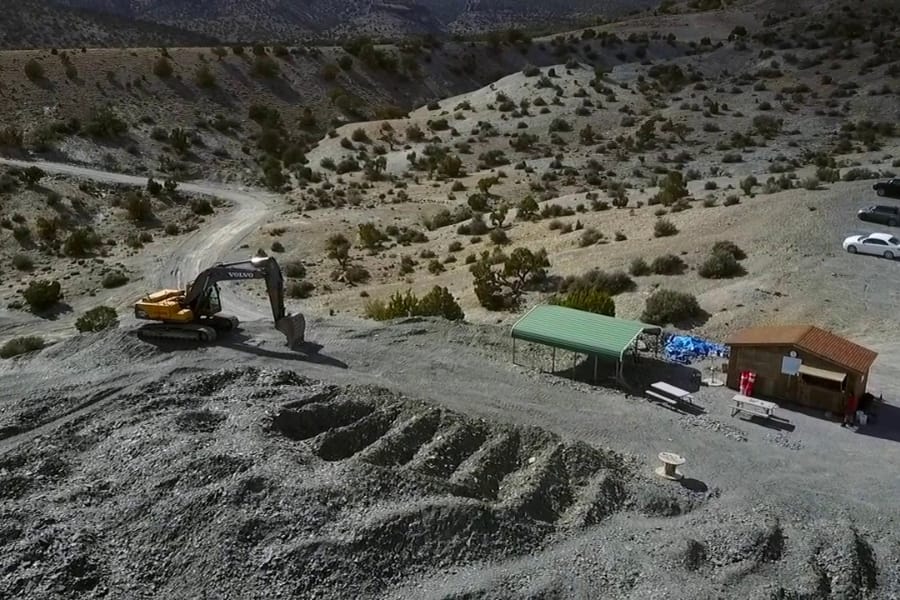
Out in the heart of Utah’s desert is a place where you can travel back in time, the U-Dig Fossils Quarry. It’s like a giant sandbox for anyone who loves fossils. It’s about 52 miles west of Delta, and you’ll know you’re close when you see the layers of shale on the mountains.
The fossils here are from the Cambrian Period, which is super old— we’re talking about 500 million years ago. It’s famous for trilobites, which are these cool, bug-like creatures that used to live in the ocean.
The best part? You get to keep what you find. They have all the tools you’ll need, and you can tap away at the rock layers during your search. U-Dig is open to everyone, and it’s a hit with families and school groups, too.
Where and what fossils to find in U-Dig Fossils Quarry
U-Dig Fossils Quarry is advertised as the richest deposit of trilobites in the world. As we mentioned above, you can find Cambrian-age specimens of trilobites here.
If you want REAL results finding incredible rocks and minerals you need one of these 👇👇👇
Finding the coolest rocks in isn’t luck, it's knowing what to look for. Thousands of your fellow rock hunters are already carrying Rock Chasing field guides. Maybe it's time you joined the community.
Lightweight, mud-proof, and packed with clear photos, it’s become the go-to tool for anyone interested discovering what’s hidden under our red dirt and what they've already found.
Join them, and make your next rockhounding trip actually pay off.
What makes it different:
- 📍 Find and identify 140 incredible crystals, rocks, gemstones, minerals, and geodes across the USA
- 🚙 Field-tested across America's rivers, ranchlands, mountains, and roadcuts
- 📘 Heavy duty laminated pages resist dust, sweat, and water
- 🧠 Zero fluff — just clear visuals and straight-to-the-point info
- ⭐ Rated 4.8★ by real collectors who actually use it in the field
Dinosaur National Monument
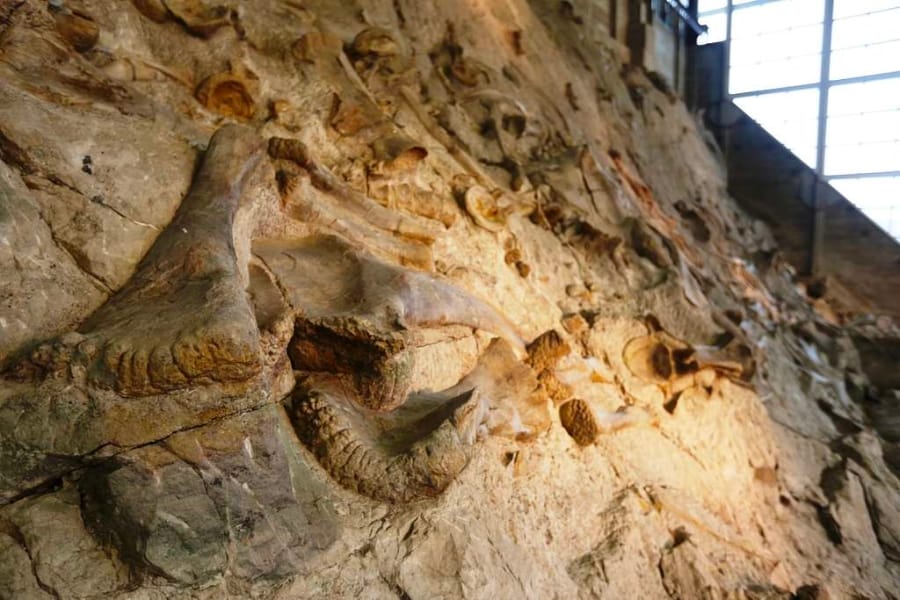
Dinosaur National Monument is where the past leaps to life. It’s a giant outdoor museum, but instead of paintings, it’s full of dinosaur bones!
This place is not just any fossil site; it’s one of the best spots to see dinosaurs as they were found, stuck in the rocks. It’s on the border of Utah and Colorado, but the main dinosaur quarry is in our state. The roads to get there are clear, with signs leading the way, so you won’t get lost.
The heart of the monument is the Quarry Exhibit Hall. It’s built right against a cliff of rock that’s like a dinosaur graveyard. The wall of bones is huge, with dinosaur bones jutting out. You can see and even touch fossils from famous dinosaurs. These giants are just there in front of you, not behind glass like in a regular museum.
Where and what fossils to find in the Dinosaur National Monument
The Dinosaur National Monument is home to the world-famous Wall of Bones, a 150 million-year-old sandstone ridge with approximately 1,500 dinosaur bones, including Allosaurus, Apatosaurus, Camarasaurus, Diplodocus, and Stegosaurus.
Keep in mind, though, that this place has a strictly no-collecting policy, but there’s no one stopping you from admiring its fossil deposits.
Spanish Fork Canyon
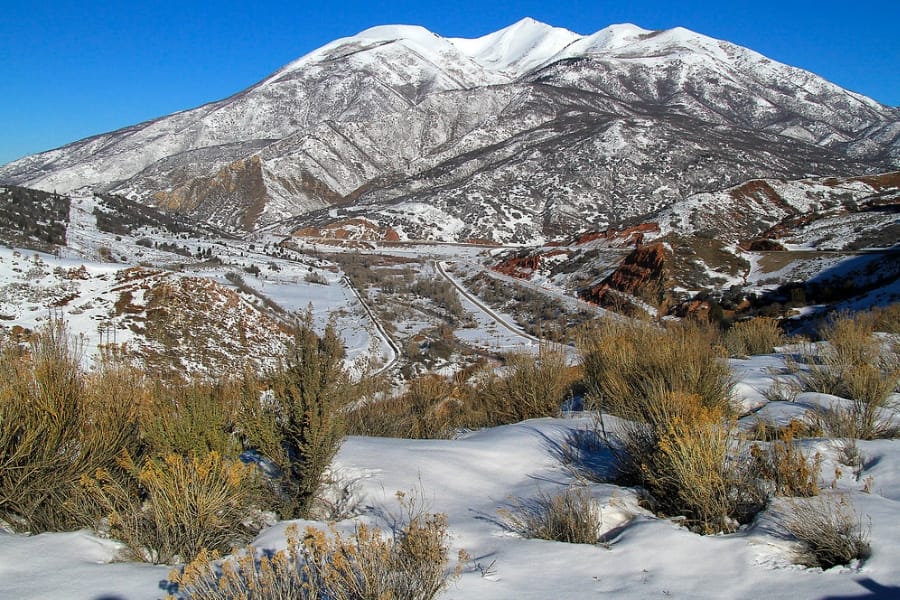
Spanish Fork Canyon cuts through the heart of the mountains with the Spanish Fork River winding its way along the bottom.
What’s exciting about this canyon is that the rocks here are super old, and they’ve been keeping fossils. Its walls are made of layers upon layers of ancient sediment, and if you look closely, you might find the remains of plants and sea creatures from when the canyon was under a vast ocean.
You’ll love Spanish Fork Canyon because it’s not just about the fossils. It’s also a place to enjoy nature, with campgrounds and trails where you can hike and see wildlife. It’s also easy to get to; just follow Highway 6 which runs right through it.
Where and what fossils to find in Spanish Fork Canyon
You can find Utah fossils from different times in our history. There are spots here where the remains of ancient fish are so well-preserved, you can still see their scales and fins.
Then there are plant fossils, impressions of leaves and stems that were once part of a lush, prehistoric landscape. It’s not every day you get to hold a piece of history that’s over 300 million years old! Lastly, there are also birds and invertebrate trackways in this canyon.
San Rafael Swell
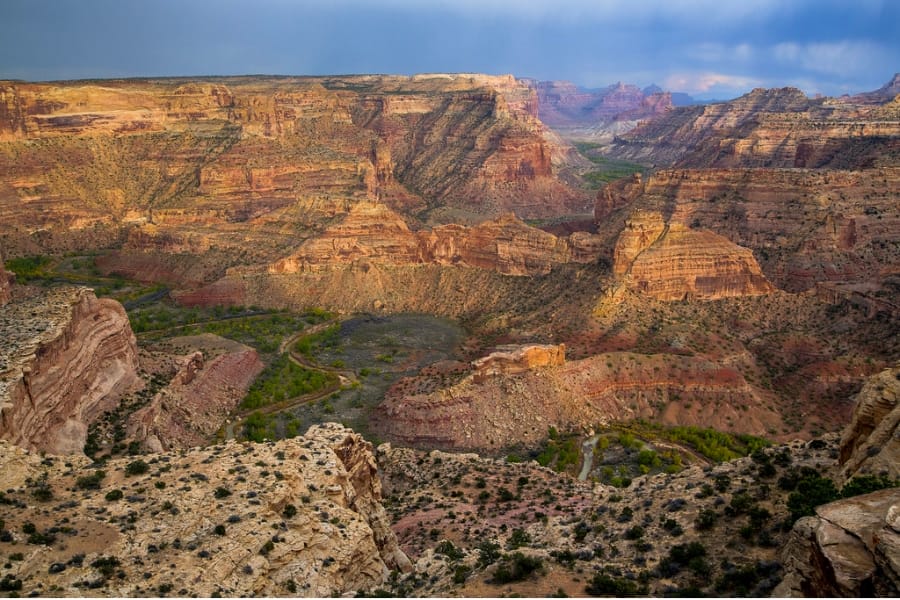
San Rafael Swell is an enormous bubble of rock that’s risen in the middle of the desert. It’s a place where you can feel like a true explorer, discovering pieces of the past as you wander through the rugged landscape.
The Swell is packed with rocks from the Jurassic period. That’s the time when dinosaurs ruled the earth. Some areas are even known for dinosaur tracks that are still stamped into the ground.
Interestingly, this place has no entrance gates or visitor centers. You can explore on your own, but it’s a good idea to have a map or GPS. It’s about two and a half hours south of Salt Lake City. You can get here by taking I-70, which slices right through the middle of it.
Where and what fossils to find in the San Rafael Swell
In the Swell, you can find bones of creatures that lived millions of years ago. It’s not just dinosaurs; there are also fossils of plants and shells that tell stories of ancient lakes and rivers that used to flow through here. Dinosaur bones, Gastroliths
Wellsville Mountains
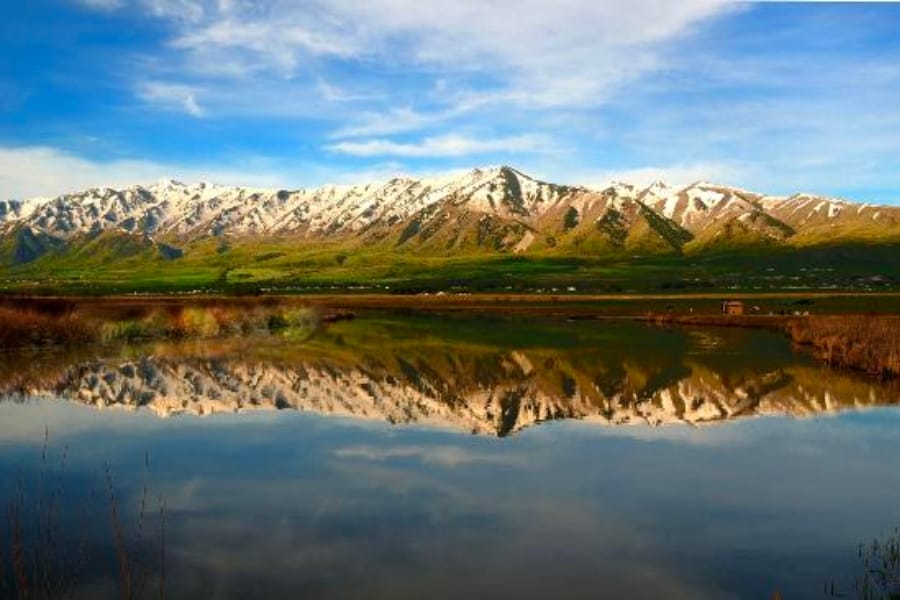
Wellsville Mountains are a slice of fossil-finding heaven, tucked away in the northern part of our state. These are part of the Rocky Mountains, and they’re known for being really steep. But don’t let that scare you off!
These mountains are made up of rocks that are hundreds of millions of years old. Over time, they have been pushed up and folded, which means they’ve brought ancient fossils right to the surface. You might find fossils from the time when Utah was covered by a shallow ocean here.
What’s great about the Wellsvilles is that they’re not just for experienced rockhounds. Even if you’re new to fossil hunting, you can explore its trails. Getting here is also a piece of cake. You can drive on well-paved roads from nearby cities like Logan.
Where and what fossils to find in Wellsville Mountains
When you explore here, you can find abundant fossils of varied faunas, including Albertelloides, Chancia, Kootenia, Nyella, Olenoides, Oryctocephalites, Oryctocephalus, Pagetia, Paralbertella, Poliella, Ptarmigania, and Ptarmiganoides.
Other Top Places To Find Utah Fossils By Region

If you want to know more sure sites to find fossils in Utah, we’ve listed down some of the best ones that you can also consider including in your itinerary here:
| Location | Fossils |
| Blacksmith Fork Canyon in Cache County | Worm and trilobite tracks, abundant and diverse Middle Cambrian fossils |
| Roof layer or area coal mines in Price, Carbon County | Dinosaur footprints |
| Along Farm Creek in Duchesne County | Belemnites, Pentacrinus |
| Yellowstone Creek upstream from Swift Creek campground in Duchesne County | Chuaria |
| Big Hole Wash in Emery County | Dinosaur bones |
| Morrison Formation in Woodside, Emery County | Bones largely dinosaur |
| Red Seeps on Castle Dale-Thompson Road in Emery County | Dinosaur egg fragments |
| Cleveland-Lloyd Quarry in Emery County | Allosaurus, Antrodemus, Camarasaurus, Camptosaurus, Marshosaurus, Stegosaurus |
| Campbell Canyon in Bryce Canyon National Park, Garfield County | Vertebrate teeth (sharks, fish, lizard, salamanders, rays, crocodiles, mammals, frogs) |
| Hills adjacent to the Colorado River in Grand County | Clams, Dinosaur bones |
| Northwest on US-163 in Moab, Grand County | Dinosaur bones |
| Hills to the east and southeast of Thompson area in Grand County | Dinosaur bones |
| Arches National Monument in Grant County | Dinosaur bones |
| Maple Canyon in Cedar City, Iron County | Gryphaea, Camptonectes, Liopistha, Lunatia, Baculites, Helicoceras, Metoicoceras, Ostrea |
| East of Garrison in Burbank Hills, Millard County | Trilobites, Corals, Stromatoporoids, Brachiopods, Cephalopods |
| Whirlwind formation in Millard County | Deltina, Elrathia, Spencella |
| Crystal Ball Cave and Gandy Caves in Millard County | Small mammal bones |
| Shale beds in Upper quartzite in Alta, Salt Lake County | Zacanthoides, Micromitra |
| Wasatch Mountains in Salt Lake County | Corals, Brachiopods |
| Canyonlands National Park boundary in San Juan County | Crayfish, Crayfish burrows |
| Perry Quarry in Sanpete County | Lepisosteus |
| Large fossil reef south of the Emery County border in Sevier County | Dinosaur bones |
| Weber River to Mouth of Franson Canyon in Tooele County | Bryozoa, Punctospirifer, Nucula, Schizodus, Orbiculoidea |
| Greenish shales of Cowboy Canyon in Uintah County | Idesia, Phoebe, Rhus, Bird fragments, Insects |
| Nearby Devils Playground in Bonanza, Uintah County | Echmatemys |
| Cedar Valley Hills in Lake Mountain, Utah County | Spiriferid brachiopods, Zaphrentis, Euomphalus, Lithostrotionella |
| Mosida Hills in North Selma Hills, Utah County | Syringopora, Composita, Caninia, Euomphalus, Spirifer, Multithecopora, Chonetes, Triplophyllites |
Common Questions About Fossil Hunting In Utah
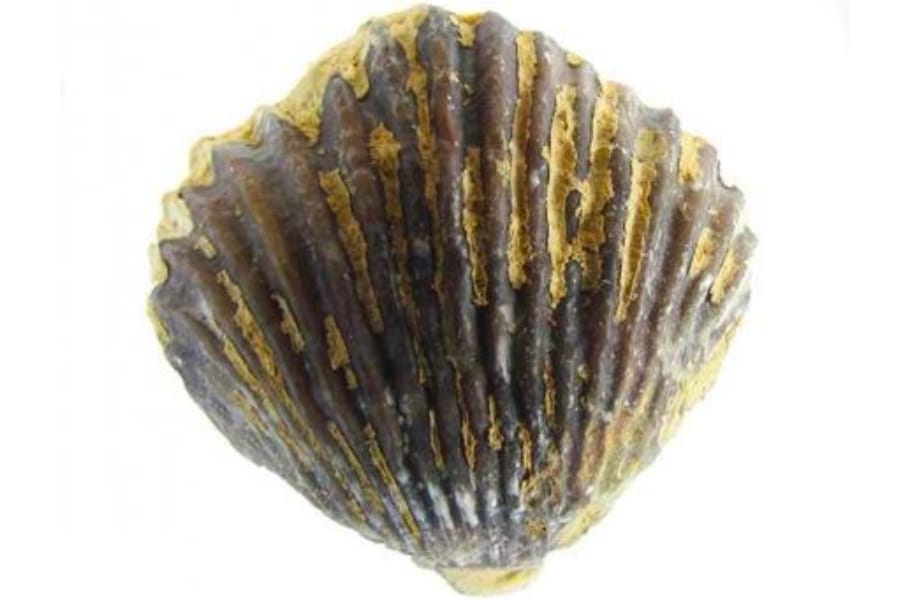
Now that we’re done sharing the best places to explore for your fossil hunting, let’s cover some of the most common questions of those who have indulged in finding fossils here:
Can you find megalodon teeth or shark teeth in Utah?
Your chances of finding megalodon teeth in Utah are pretty much non-existent because the megalodon lived during a time when our state wasn’t covered by the ocean waters where they would have been swimming.
But, don’t lose hope on shark teeth entirely. During different periods in Earth’s history, parts of Utah were under ancient seas, and sharks did call these waters home.
So, while you won’t be finding megalodon teeth, it’s possible to find fossilized teeth from other, smaller prehistoric sharks here.
Is it illegal to collect fossils in Utah?
It’s not outright illegal to collect fossils in Utah, but there are strict rules about where and what you can collect.
You’re generally allowed to collect common invertebrate and plant fossils on U.S. Bureau of Land Management (BLM) and U.S. Forest Service lands without a permit, as long as it’s for personal use and not for sale. But, collecting vertebrate fossils, like dinosaur bones, is a big no-no unless you have a scientific research permit.
Our state takes the protection of its paleontological sites very seriously. That means no fossil collecting in national parks, national monuments, or state parks. These places are off-limits and if you’re caught removing fossils from these protected areas, you could face some hefty fines or even more serious legal trouble.
Can you find dinosaur bones in Utah?
Utah is, in fact, one of the best places in the world to find dinosaur bones! It’s famous for its numerous dinosaur sites, as we’ve discussed above, with an incredible variety of specimens.
The variety of fossils found here spans a wide range of dinosaur species, from the famous Utahceratops to the predatory Allosaurus. Many of these finds have been critical to our understanding of the Mesozoic era.
If you’re hoping to find dinosaur bones here, it’s essential to know that while you can look for fossils, collecting vertebrate fossils (like dinosaur bones) on public land is illegal without a scientific permit.
Our Favorite Places To Buy Fossils In Utah
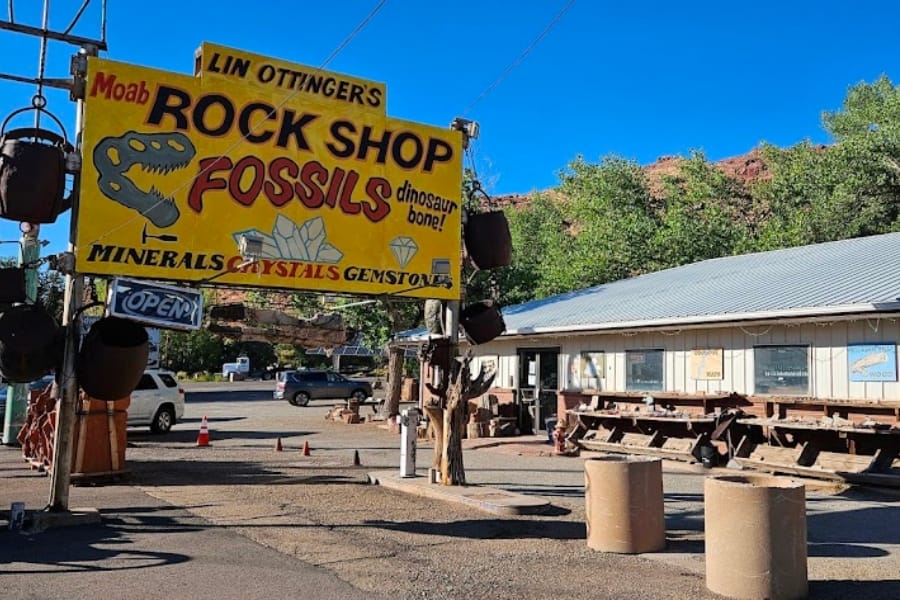
With the abundance of Utah fossils, there are also plenty of local shops that sell them. If you’re curious to see what they have in store, you can visit our trusted shops listed below:
- Dixie Rocks & Fossils – 946 W Sunset Blvd # I, St. George, UT 84770
- Escalante Rock Shop – 1075 N Reservoir Rd, Escalante, UT 84726
- Fossil Shack – 387 N 100 E, Salem, UT 84653
- Moab Rock Shop – 600 N Main St, Moab, UT 84532
- The Bug House – 350 E 300 S, Delta, UT 84624

